(see «Engine management system»), malfunction of the spark plug of one of the cylinders, air leakage into one of the cylinders. You need to find the problem and fix it if possible.
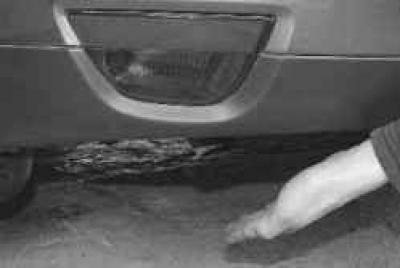
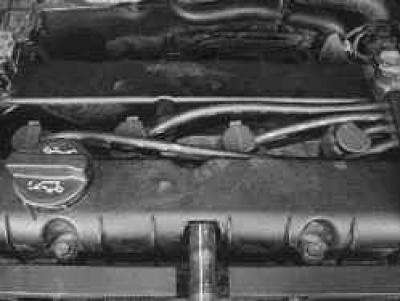
1. Start the engine and let it idle. Go to the exhaust pipe and listen to the sound of the exhaust. You can bring your hand to the cut of the exhaust pipe - so interruptions are felt better. The sound must be even «soft», one tone. Pops from the exhaust pipe at regular intervals indicate that one cylinder is not working due to the failure of the candle, the absence of a spark on it, the failure of the nozzle, a strong air leak into one cylinder or a significant decrease in compression in it. Popping at irregular intervals is due to dirty injector nozzles, heavy wear or dirty spark plugs. If pops occur at irregular intervals, you can try to replace the entire set of candles yourself, regardless of mileage and appearance, but it is better to do this after contacting a car service to diagnose and repair the engine control system.
2. If the popping is irregular, stop the engine and open the hood. Check the condition of the ignition wires. The insulation of high-voltage wires must not be damaged, and their lugs must not be oxidized. If there is damage to the wires, replace the defective wire.
USEFUL ADVICE: The simplest and at the same time effective way to check high-voltage wires is to check in the dark. Park the car in a dark place, start the engine and open the hood. Check the high voltage wires. If the insulation of the wires is broken, you will see a characteristic blue-violet spark («northern lights»). In this case, high-voltage wires require mandatory replacement.
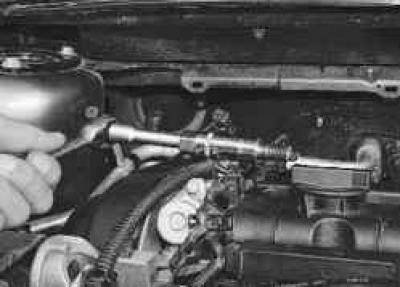
3. Remove the spark plugs (cm. «Replacement and maintenance of spark plugs»).
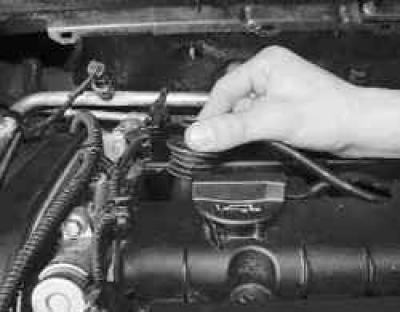
WARNING: When removing high voltage wire lugs, never pull on the wire itself. Grasp the tip directly with your hand and, turning it from side to side, pull.
4. Carefully inspect the candles and compare their appearance with the photographs shown in the next subsection «Diagnostics of the engine condition by the appearance of spark plugs». If the candle is black and damp, it can be discarded.
5. If all the spark plugs look good, reinstall them and reconnect the high voltage wires. The order of operation of the cylinders: 1–3–4–2; cylinder numbering (1st, 2nd, 3rd, 4th) is driven from the engine crankshaft pulley.
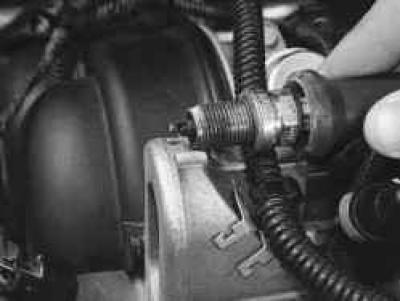
6. Get a spare spark plug. Fix it to the engine in any way.
Connect the high voltage wire of the 1st cylinder to the spare spark plug. Start the engine. If engine interruptions do not increase, replace the spark plug in the 1st cylinder with a known good one. Put on the high voltage wire and start the engine. If interruptions intensify, repeat this procedure sequentially with all cylinders to find a faulty spark plug.
WARNING: Reliable contact of the spark plug body with «weight» is mandatory, since if an additional spark gap appears that is larger than the gap between the spark plug electrodes, the high-voltage circuit of the ignition coil or the engine control unit may be damaged.
WARNING: Try to carry out the check described above in the shortest possible time period, since catalytic converters with prolonged intake of unburned gasoline can fail due to overheating, as gasoline will burn in them.
If as a result of the measures taken engine interruptions are not eliminated, check the compression in each of the cylinders
(cm. «Cylinder compression check»). Normal compression - more than 1.0 MPa (10 kgf/cm2), the difference is more than 0.1 MPa (1 kgf/cm2) in one cylinder indicates the need for engine repair.
Visitor comments